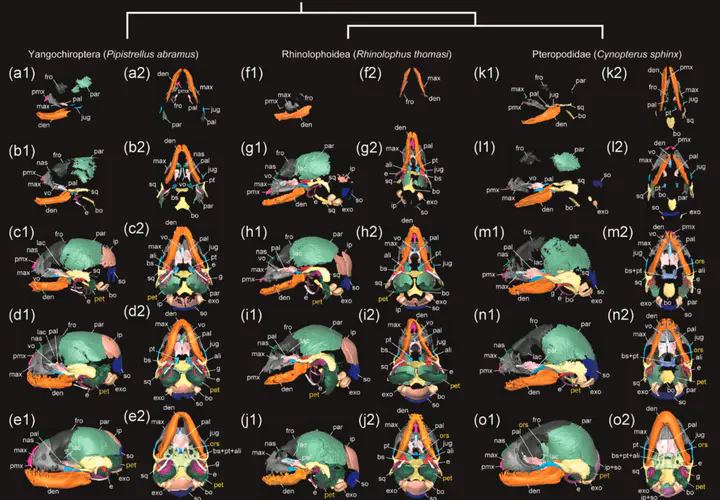On the sequence heterochrony of cranial ossification of bats in the light of Haeckel's recapitulation theory
 Image credit: Unsplash
Image credit: Unsplash
Abstract
Haeckel’s recapitulation theory has been a controversial topic in evolutionary biology. However, we have seen some recent cases applying Haeckel’s view to interpret the interspecific variation of prenatal ontogeny. To revisit the validity of Haeckel’s recapitulation theory, we take bats that have undergone drastic morphological changes and possess a characteristic ecology as a case study. All members of Rhinolophoidea and Yangochiroptera can generate an ultrasonic pulse from the larynx to interpret surrounding objects (laryngeal echolocation) whereas Pteropodidae lacks such ability. It is known that the petrosal bone is particularly derived in shape and expanded in laryngeal echolocators. If Haeckel’s recapitulation theory holds, the formation of this derived trait should occur later than those of other bones. Therefore, we compared the prenatal ossification timing of the petrosal in 15 bat species and five outgroup species. We found that the ossification of the petrosal is accelerated in laryngeal echolocators while it is the last bone to ossify in non‐laryngeal echolocating bats and non‐volant mammals, which runs counter to the prediction generated by Haeckel’s recapitulation theory. We point out the evolutionarily labile nature of trait developmental timing and emphasize that Haeckel’s recapitulation theory does not hold in many cases. We caution that generating predictions on ancestral conditions and evolutionary history leading from Haeckel’s recapitulation theory is not well supported.
Nojiri, T., Tu, V. T., Sohn, J. H., and Koyabu, D.
Journal of Experimental Zoology Part B:Molecular and Developmental Evolution (2022)